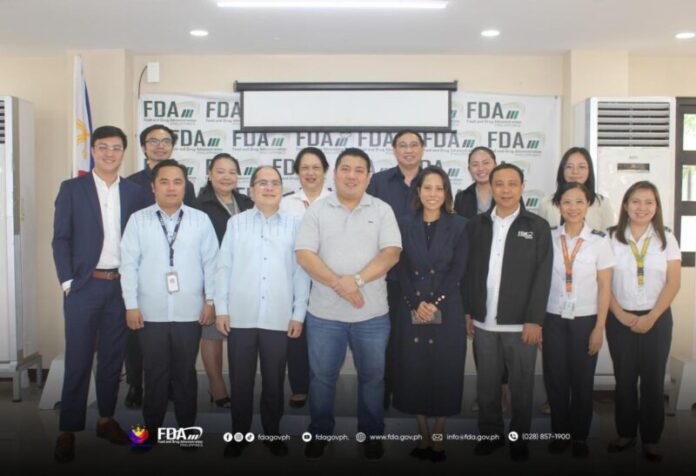
· The Philippine Economic Zone Authority and Food and Drug Administration recently met with the Office of the Special Assistant to the President for Investment and Economic Affairs on the establishment of pharmaceutical economic zones
· PEZA, FDA, and OSAPIEA’s meeting centered on actionable steps to enhance the ease of doing business for both domestic and export-oriented drug and medical device manufacturers
· PEZA director general Tereso Panga proposed several potential locations for the inaugural zone
The Philippine Economic Zone Authority (PEZA) and Food and Drug Administration (FDA) recently met with the Office of the Special Assistant to the President for Investment and Economic Affairs (OSAPIEA) on the establishment of pharmaceutical economic zones in the country.
PEZA and FDA on March 14 convened a meeting with OSAPIEA as a follow-up to the February sectoral meeting between FDA and President Ferdinand Marcos Jr., who floated the idea of setting up pharmaceutical zones that will serve as one-stop shops to make the drug application process more accessible and efficient.
The pharmaceutical economic zone is a two-pronged approach for the Philippines to have local production of drugs and make medicines readily available and affordable to Filipinos, PEZA said in a statement.
It will target both manufacturing of pharmaceuticals and medical devices, and other related activities including research and development, and clinical testing and trials, among others.
In a separate statement, FDA said the pharma ecozones will serve as specialized hubs for local and foreign companies involved in medical and drug manufacturing, including research and development (R&D) and clinical testing and trials.
This ensures that products manufactured within these ecozones meet rigorous quality and regulatory standards and will likewise address the development and manufacture of common generic drugs that will boost local supply and bring down the prices of medicines.
Such ecozones can also boost local supply as well as provide opportunities for Filipino small and medium enterprises to engage in the manufacturing and tolling of drugs, food supplements, and other medical products.
The meeting between PEZA, FDA, and OSAPIEA centered on actionable steps to enhance the ease of doing business for both domestic and export-oriented drug and medical device manufacturers by addressing certain non-tariff barriers, particularly in permitting and licensing.
The group also agreed to study the provision of a green lane for PEZA locators and update the PEZA-FDA memorandum of agreement, initially established in 2014, to improve licensing and registration for prospective and existing PEZA registered business enterprises (RBEs).
“We are committed to working in unison with the OSAPIEA and PEZA to simplify business operations in our country,” FDA director general Dr. Samuel Zacate said.
Zacate added: “By refining our policies and collaborating with PEZA, we aim to gain a better understanding of the concerns of locators. These initiatives are expected to elevate the local drug supply and reduce costs to competitive generic levels, akin to those in India.”
PEZA noted that this partnership will also complement the consumer protection, education, and advocacy initiatives of the Department of Trade and Industry (DTI) regarding counterfeit drugs.
Employing a whole of government approach, the partnership will also involve DTI, Department of Health, Anti-Red Tape Authority, Bureau of Customs, Bureau of Internal Revenue, and other agencies to strictly regulate and monitor pharmaceutical-related activities in the country.
Discussions also explored the structure of pharmaceutical ecozones within Association of Southeast Asian Nations, evaluating how similar models could be implemented or adapted in the Philippines.
PEZA director general Tereso Panga proposed several potential locations for the inaugural zone.
READ: PEZA eyes guidelines for registration of pharma zones
The pharmaceutical industry is identified as a strategic industry in the Philippines. Under Republic Act No. 11534, or the Corporate Recovery and Tax Incentives for Enterprises (CREATE) Law, health, medical, and pharmaceutical-related activities fall under Tier II, meaning they will be able to enjoy 5-7 years of income tax holiday and 10 years special corporate income tax for export enterprises or five years enhanced deduction for domestic market-oriented enterprises.
Panga noted that companies will be able to enjoy other incentives when they locate within the ecozones, which can provide for the best location and business ecosystem for investors.
“We are thankful to the OSAPIEA and the FDA for the support that they are extending to our existing and would-be RBEs, especially those who are engaged in medical devices manufacturing and looking to set up their drug manufacturing—whether it be for human or animal—here in the Philippines,” Panga said.
As of December 2023, PEZA hosts 26 operating companies into the manufacturing of pharmaceutical products and medical equipment or devices, such as Terumo, Arkray Industry, Royale Life Pharma, JMS Healthcare, and Philipcare Medical, generating about P25.489 billion of investments and more than 19,000 direct jobs for the country.
PEZA is also reviving talks with the leading Filipino companies into pharmaceutical-related activities such as Lloyd Laboratories, Pascual Laboratories, and United Laboratories, Inc., for the establishment of a modern pharma park in the country.




